 Your new post is loading...
 Your new post is loading...
Since I published my book KNOWN, I’ve had an incredible amount of fun coaching dozens of people through a process to create a profound online presence. I’m starting to see that there are three specific issues where people get stuck when embarking on their personal brand strategy. Today, I’m going to name these three areas and propose some ways for you to get “unstuck” if you’re experiencing these problems. The building blocks Before we go through the three common problems. Let’s review the primary process behind the book, as a reference. Every person who becomes “known” in their field follows four steps: “PLACE” — Not necessarily a “passion,” but a sustainable interest — it’s your story, what you want to be known for. “SPACE” — Where do you tell this story? Can you find a niche that is uncontested or under-served? “CONTENT” — The fuel of a personal brand strategy is consistent content — written, audio, or video. “ACTIONABLE AUDIENCE” — In the book I show how a social media audience is passive and I demonstrate how to build a tribe that can help support your goals....
Hootsuite founder and CEO, Ryan Holmes, dishes on why social media is not just important for brands, but for the heads of the brands as well. When it comes to marketing, social media is often discussed as a channel directive. It is a channel marketers need to cultivate an audience on, and can be used to humanize their brand to an extent. Social—especially in the age of Trump—is now often a medium where brands must defend themselves against major scandals. But we rarely bring CEOs into the marketing/social media mix.Ryan Holmes, founder and CEO of Hootsuite, spoke with us in the latest DMN One on One podcast. We caught up with Holmes a few days before the release of his latest book, "The 4 Billion Dollar Tweet." Here's our conversation on how CEOs can, and why they should, get savvy with social media....
But to little old me, a sincere apology goes a long way. When I sense genuine remorse, it means a lot to me -- perhaps because it's so rare, at least in my experience. Combined with my nerdy affection for all things marketing, that sentiment applies to brand apologies, too. It's not so much that I think, "Wow, that means a lot to me," but more like, "Wow, that company really nailed saying, 'Sorry.'" So, who's done it best? We rounded up some of our favorite brand apologies to inspire you next time you make a mistake -- and need to admit your wrongdoing....
But we are entering a new phase of this cultural development. Customers don’t merely want to know where their order is, or where thy can find a good deal. They want to know what we stand for. Mitch Joel writes about this beautifully in hisrecent post: “Brands are willingly (and unwillingly) being pulled into these social media, traditional media and public battles, that are driven by a customer’s values and how they may oppose those of the brands. It’s interesting: the consumer now believes that it’s not about what you sell and the price of it, but what you stand for.“ What’s unique now, is that the brand response is no longer binary. In today’s environment, brands that have quickly/swiftly removed themselves from the situation have often not been applauded, but hurt more for bending and cowering to another side. Brands that have pointed the blame elsewhere (like, say, blame the technology) have been bashed for being so out of touch with how business works these days. Brands that have distanced themselves from influencers that have run amok, are still accused of using them for when it works for the brand, but bailing on them when times get tough (meaning: not authentic). And more....
That was the question I was recently asked by my friend Vivienne Neale. I wasn’t sure how to reply. After all, we all have our “thought leaders” whom we follow. Me, I always wanted to be part of a community where doing meaningful things made belonging matter. Honestly, I don’t consider myself a thought leader. I simply shared my ideas and work because I felt alone in my mission to change the future of business. I’ve always believed I couldn’t do it alone. I, we, needed one another to learn, unlearn, grow and change.
I once said that becoming a thought leader is about YOU being inspired to do something that helps someone else....
We are living in an era of backlash against authority. So far, government and the media have borne the brunt of populist anger, while businesses have remained above the fray. Past protest movements such as Occupy Wall Street notwithstanding, mass outrage has yet to be directed squarely at the business elite. But there are signs that this is changing. For 17 years the Edelman Trust Barometer has surveyed tens of thousands of people across dozens of countries about their level of trust in business, media, government, and NGOs. This year was the first time the study found a decline in trust across all four of these institutions. In almost two-thirds of the 28 countries we surveyed, the general population did not trust the four institutions to “do what is right” — the average level of trust in all four institutions combined was below 50%. We also discovered a staggering lack of confidence in leadership: 71% of survey respondents said government officials are not at all or somewhat credible, and 63% said the same about CEOs. The credibility of CEOs fell by 12 points this year, to 37% globally. By comparison, 60% of respondents trusted “a person like yourself” — on a par with trust in a technical expert or an academic....
IAn instant is all it takes to threaten your business's sterling reputation online. You might have had an off day or the misfortune of dealing with an ornery customer, but it's almost inevitable that you'll come face to face with a negative online review at some point in your career. But, as Adrienne Weissman, CMO at G2 Crowd, recently pointed out, negative reviews aren't all bad. Some 70% of Americans read reviews before making a purchase, and those who seek out negative reviews tend to be more engaged and are 67% more likely to make a purchase. Plus, 68% of people trust a company more when their reviews are a mix of good and bad. Of course, the key to making the best of a bad review lies largely in your response. That means you need to be able to find reviews (both good and bad) as they pop up. That's definitely more social media monitoring than one person can handle... And that's where reputation management tools come in. The following five reputation management tools are some of the best on the market for tracking mentions, discovering influencers, and managing online reviews as they happen....
The nonprofit Online Trust Alliance (OTA) on Wednesday conducted a study that found 71% of native ads on top media sites fail to offer adequate labeling, transparency, and complete consumer disclosure.
This is a blow to the native ad/branded content business and should be a wake-up call for publishers and content studios.
The study, an analysis of native ads on the top 100 news websites, found that 71% earned failing scores for disclosures, delineation, and discoverability. The bottom line: The sites didn’t offer consumers the ability to easily discern pure editorial from ads.
As most readers of this column know, native advertising refers to Web site content that’s funded and produced outside the publisher’s editorial review or influence, yet is designed to appear similar to editorial on that site. As the OTA mentions, “this illustrates the tension -- paid for and controlled separately, but presented in a way to appear as editorial. The potential for audience confusion or misinterpretation is obvious, and the rapid rise in the deployment of native has already prompted concerns from advocates, media and regulators.”...
“While the industry looks at native advertising as the holy grail to drive new revenues, they are failing to address the long-term issue. With 71% of native ads failing to pass the consumer transparency acid test, this report should be a wake-up call to the industry. Inaction is not an option. Conversely, providing these concrete examples and recommendations helps advertisers, networks and publishers in moving forward,” Craig Spiezle, executive director at the Online Trust Alliance, told Native Insider via email.
Nonprofit organizations (NPOs) are increasingly using social media to spread campaigns. Little research has focused on the influence of user comments on trust in NPOs regarding campaigns in social media. Stakeholders’ trust is seen as important for NPOs. Two experimental studies examine the influence of user comments with different connotations concerning campaigns that were published on the social networking site Facebook. The first experiment focused on the World Wide Fund for Nature (WWF). The second experiment applied to a fictitious NPO, to avoid reputation influence. Irrespective of the NPO’s reputation, the results show that user comments in social media influence the perceived trustworthiness of NPOs. Trustworthiness is fundamental to acts of trust such as those taking the form of a donation....
In the era of Facebook and YouTube, brand building has become a vexing challenge. This is not how things were supposed to turn out. A decade ago most companies were heralding the arrival of a new golden age of branding. They hired creative agencies and armies of technologists to insert brands throughout the digital universe. Viral, buzz, memes, stickiness, and form factor became the lingua franca of branding. But despite all the hoopla, such efforts have had very little payoff.
As a central feature of their digital strategy, companies made huge bets on what is often called branded content. The thinking went like this: Social media would allow your company to leapfrog traditional media and forge relationships directly with customers. If you told them great stories and connected with them in real time, your brand would become a hub for a community of consumers. Businesses have invested billions pursuing this vision. Yet few brands have generated meaningful consumer interest online. In fact, social media seems to have made brands less significant. What has gone wrong?
To solve this puzzle, we need to remember that brands succeed when they break through in culture. And branding is a set of techniques designed to generate cultural relevance. Digital technologies have not only created potent new social networks but also dramatically altered how culture works. Digital crowds now serve as very effective and prolific innovators of culture—a phenomenon I call crowdculture. Crowdculture changes the rules of branding—which techniques work and which do not. If we understand crowdculture, then, we can figure out why branded-content strategies have fallen flat—and what alternative branding methods are empowered by social media....
Since 2012, Cohn & Wolfe has studied authenticity as a guiding principle and business practice. Each year, our research reveals more insight on the strategic power of authenticity and its unique opportunity to build reputation.
Cohn & Wolfe has discovered a huge authenticity gap in the eyes of global consumers. With 75 percent of consumers surveyed in 14 markets believing that companies are not open and transparent, it’s clear that brands have a credibility problem.
Our 2016 findings reveal that cynicism towards brands is highest among Western European countries, while high growth / low per capita GDP countries recognize authenticity in brands the most.
Across global markets, approximately one in five consumers finds brands “Open and Honest.” At 23 percent, the US places just above the global average. In Western Europe, a mere 5 percent of consumers in Sweden consider companies “Open and Honest,” while the UK, France, Germany and Spain all match the same low level at 7 percent.
Brazil, while generally higher than Western Europe, is still lower than the US at 19 percent.
Even in China and Indonesia, where consumers are least pessimistic about brand authenticity, only about a third of the population (36 percent and 35 percent, respectively) consider companies “Open and Honest.”
The opportunity for businesses to close this gap is staggering....
When it comes to conducting business online, trust is one of the scarcest and hardest-to-earn resources. No amount of money can purchase it, and it’s incredibly difficult to replace once it has been lost. Trust can be a defining factor that drives potential customers to choose your products or services over those of your competitors, so you can’t afford to overlook it.
To make establishing trust easier, let’s examine some simple tips that you can start incorporating into your marketing strategies today. These seven techniques involve educating consumers, personalizing marketing messages, and providing a positive user experience to help you get the most out of your investment and increase sales....
Have you ever wondered if content authenticity is compromised when brands pay influencers for posts?
Finding out how consumers engage with sponsored content isn’t something that marketers should guess on so GroupHigh surveyed thousands of influencers to find out how they prefer to be compensated for their brand recommendations and how their audience feels about sponsored content....
|
Reputation is everything. And on the internet, that couldn't be more true.It's important to always know what people are saying about you -- whether it's your customers, your competitors, or the press. And on any given day, it can be tricky to keep up with what your audience is sharing across a variety of social media platforms. So, we've rounded up some of the best free social media and brand monitoring tools from around the vast web of social networks. Nearly all of these tools are free, but some offer paid versions with more features and capabilities. Let's dive into each one -- and see if you want to test them out today....
Late last week I flew United from San Francisco to London. As we got on the plane one of the other passengers gave a box of chocolates to the flight staff as an act of kindness and support for the awful week they’ve had. Nearly 300 stories have been published by the leading news orgs in the US and UK about the incident. Unsurprisingly, our analysis shows sentiment of the coverage is almost exclusively negative. Those stories have earned nearly 1 million shares on Facebook in aggregate. That’s a lot of unwanted exposure for the company. It surpassed United’s trouble with leggings from the previous week about four times over....
Brand management is a little bit like dental hygiene: Those who ignore it are going to end up with big problems that easily could’ve been avoided. Yet marketers who fail to comply with brand standards and legal safeguards risk losing more than just a tooth. These failures often cost content marketers their credibility and, in some cases, their jobs. Just ask the people who sexualized IHOP’s pancakes, told Bloomingdale’s shoppers to roofie their friends for the holiday season, and put the male symbol on the cover of The Washington Post’s magazine for a story about the 2017 Women’s March. Perhaps the most painful part of these marketing blunders is that it wouldn’t have taken much effort to prevent them....
We’ve been together for a while now, Marketing Blog readers. I’ve shared stories with you about business school, my surprise revelation that I’m an introvert, and other personal tidbits here and there. Here's one that I hope won't lower your opinion of me: I have a bit of a potty mouth. My first instinct is to apologize for it. But then, I came across new research that shows astrong correlation between cursing and authenticity in character. If only I had known that when I was a rebellious teen and could have retorted, as my colleague Kierran Petersensuggested, "I’m being authentic, Mom!" But it's true -- the study showed a positive connection between profanity and honesty -- on both a micro (individual) and macro (society) level. I've seen real-life examples of this phenomenon. Gary Vaynerchuk -- (in)famous for his profuse utterance of the "F" word in content and public appearances -- has experienced tremendous success as a marketer. And Doug Kessler, creative director of the agency Velocity Partners, has given numerous presentations on the power of swearing in your marketing. So how can this whole thing be executed without risking a loss of respect? And why are we so drawn to it, anyway? We had a look at some example and research, and drew some, er, freakin' conclusions....
All modern American presidents have seen their disapproval rating surpass the 50 percent mark at some stage after taking office. Some reached that milestone faster than others but generally, it took all of them hundreds of days to do so. George Bush senior lasted an impressive 1,336 days before he hit 50 percent disapproval in Gallup's polls while Bill Clinton lasted 573 days before reaching majority disapproval. As a result of the federal debt crisis, Barack Obama passed the 50 percent mark 936 days into his presidency.
Donald Trump has reached majority disapproval in record time, just 8 days. When he entered office, an initial poll from Gallup showed that 45 percent of Americans approved of him, 45 disapproved and 10 percent were undecided. In his first week, he announced construction of the border wall, halted immigration from seven countries, gutted the Affordable Care Act and reversed U.S abortion policy, pushing his disapproval rating to 51 percent, according to a Gallup poll released on January 28....
Scholars in public relations have contended that organization-public relationship (OPR) quality has multiple dimensions, including the oft-cited list of trust, satisfaction, control mutuality, and commitment. The concept of OPR quality is assumed to be positive (Heath, 2013), which nevertheless does not describe relational problems in reality. In this blog post, I introduce an additional side of OPR quality—distrust, and how it differs from trust. Distrust is often considered as simply the opposite of trust by organizational researchers and excluded as a component of OPR quality in the public relations literature. However, distrust is not the absence of trust. For example, an employee may have both low levels of trust and distrust in his or her colleagues who resemble casual acquaintances in the organization. They only occasionally cross paths with these coworkers. They are not confident in or very watchful of these relational partners. Also likely the employee could feel both high levels of trust and distrust in his or her superiors. They trust the management, as representatives of the organization, in some aspects but distrust in other aspects. In an employee survey (N=583), I tested distrust as a new dimension of OPR quality (Shen, in press). I found that both distrust and trust were distinct from each other. The study suggested that OPR quality is not inherently positive. Employees may perceive sinister intentions of the organization’s conduct. Even those who highly trust their employing organizations do not necessarily perceive low distrust, and vice versa. Employees could feel confident about the organization’s capabilities—trust, while at the same time they are skeptical about whether the organization keep employees’ interests in mind when making decisions—distrust....
No matter how secure and well-placed a brand appears to be, the danger of an online reputation crisis is always lurking. The open nature of modern day communication channels, like blogs, social networks and review sites, means that one bad customer experience or a small lapse in service standards can quickly damage a brand’s reputation. Negative experiences shared more often Research shows that consumers are much more likely to share negative experiences on social networks and other public platforms. A damaged online image can have severe effects on a brand’s value and business performance. A study by Deloitte shows that nearly 41% of companies that experience a negative reputation event reported loss of brand value and revenue....
Welcome to the findings of the BrightLocal Local Consumer Review Survey 2015.
This annual survey is an exploration into how consumers both read & use online reviews. It seeks to qualify the value that users place on reviews that they read & how this impacts their opinions & actions when searching for a local business to use. The survey is specifically concerned with reviews for local business services and not wider product reviews. Key 'Takeaways' From Research: - 92% of consumers now read online reviews (vs. 88% in 2014)
- 40% of consumers form an opinion by reading just 1-3 reviews (vs. 29% in 2014)
- Star rating is #1 factor used by consumers to judge a business
- 44% say a review must be written within 1 month to be relevant
- Only 13% of consumers consider using a business that has a 1 or 2 star rating
- 68% say positive reviews make them trust a local business more (vs. 72% in 2014)
- Consumers are becoming more concerned about fake reviews
Americans hold a more favorable opinion of CEOs who take public stances on controversial topics, according to “The Dawn of CEO Activism,” a study released by Weber Shandwick and KRC Research. Weber Shandwick has identified CEO activism as a factor that can “drive and differentiate corporate reputation.” Leaders taking a stance on hot-button issues is powerful. However, “The Dawn of CEO Activism” advises caution, stating that CEOs should be careful in choosing topics they speak out on. The research, which can be found here, extracted five key tenets of CEO activism, illustrating the pros and cons of vocal corporate leadership....
So people don’t trust brands – but what does that MEAN?
That they think you’re overcharging them?
That they’re worried you’ll lose their credit card information to hackers?
That they wouldn’t ask you to watch their cocker spaniel for the afternoon?
Mistrust comes from a disconnect between what you say and what you do.
A whopping 78% of people think that in general, brands are NOT open and honest. In fact, only 1 in 4 people thinks that brands actually do what they say they’re going to do – a level of mistrust typically reserved for badly behaved toddlers and black market organ dealers.
This doesn’t mean you or your business have necessarily made people feel misled – but it means you still have to work a lot harder to make up for the damaged caused by brands in general....
This year’s Trust Barometer shows something amazing. The biggest increase in trust hasn’t been in the media or NGOs or the government… it’s been in the private sector.
The general public wants businesses to lead the way when it comes to societal issues. More specifically… Edelman says the data shows people want CEOs to be more visible.
They want to know the person leading a business. They want to know their values and where they stand on social issues....
Online marketplace Amazon.com made its debut in the 2015 Thomson Reuters Top 100 global innovators list, leaving International Business Machines, the world's largest technology services company, out of the list.
Amazon joins the innovators list for the first time for innovations in data centers, devices, electronic methods and systems, according to its latest report.
The Thomson Reuters Top 100 global innovators program identifies innovators annually through an in-depth analysis based on a series of patent-related metrics that analyze what it means to be truly innovative. There are 27 companies that are dropped from the list this year, including AT&T (T.N), IBM (IBM.N), Siemens (SIEGn.DE) and Xerox (XRX.N)....
|



 Your new post is loading...
Your new post is loading...

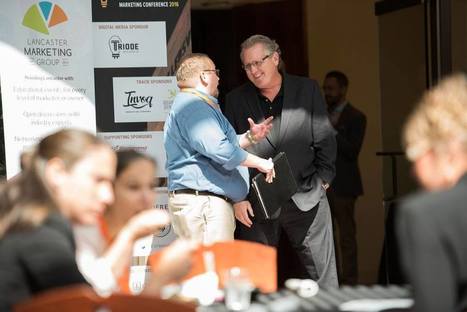



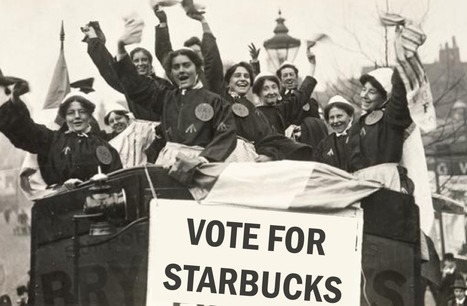
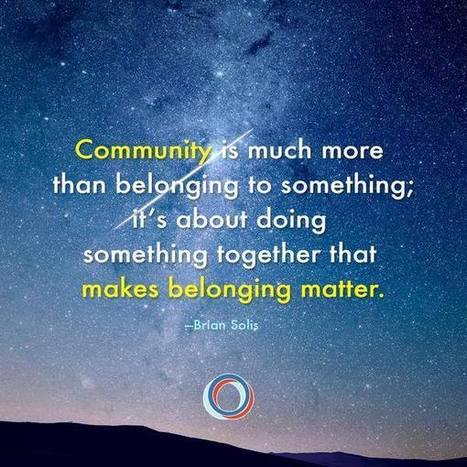


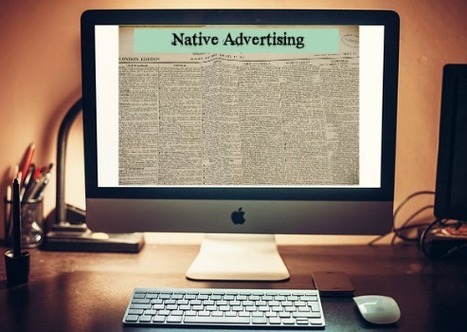


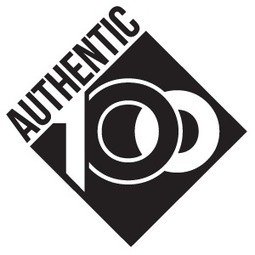



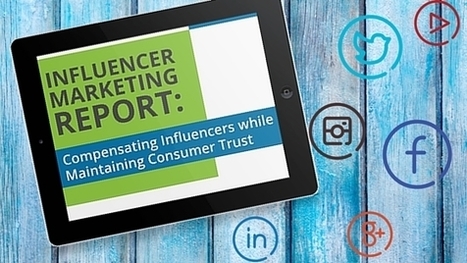




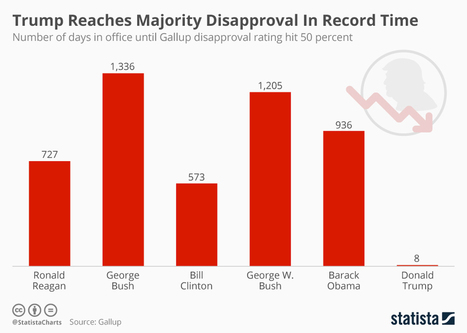

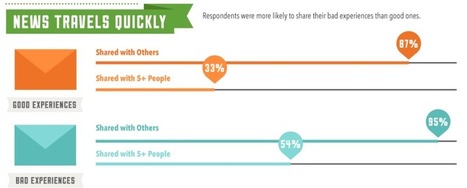
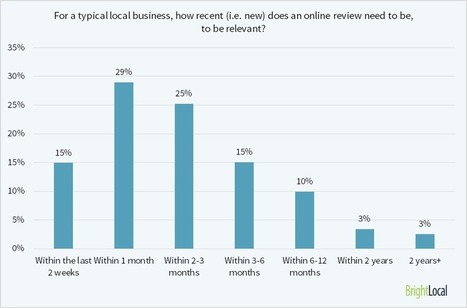



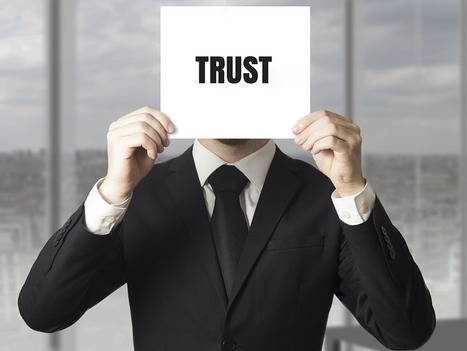
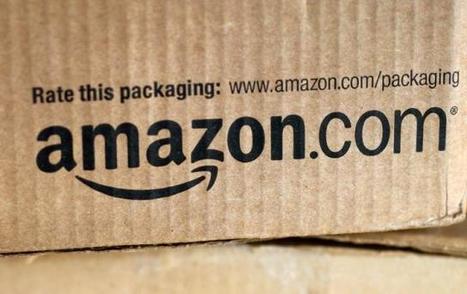





Mark Schaefer says people are bumping up against three hurdles as they try to determine their personal brand strategy. Here are some ideas to overcome and break though!